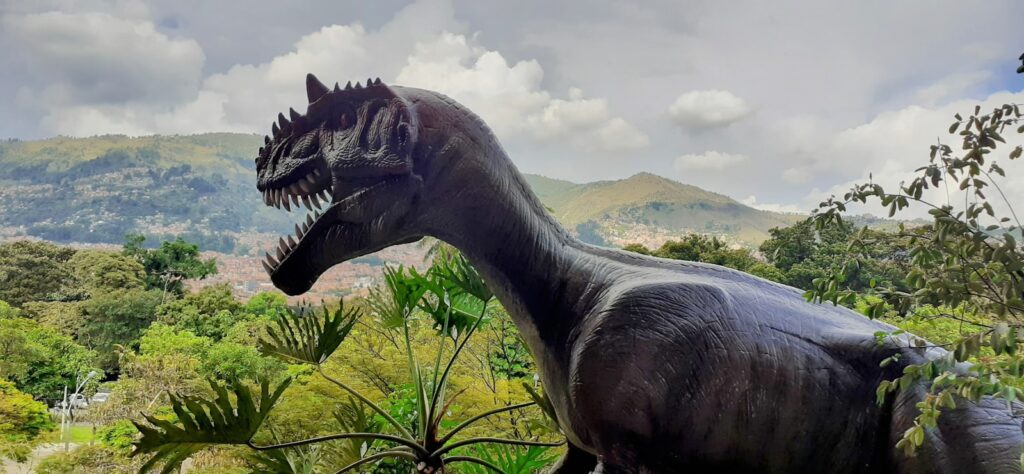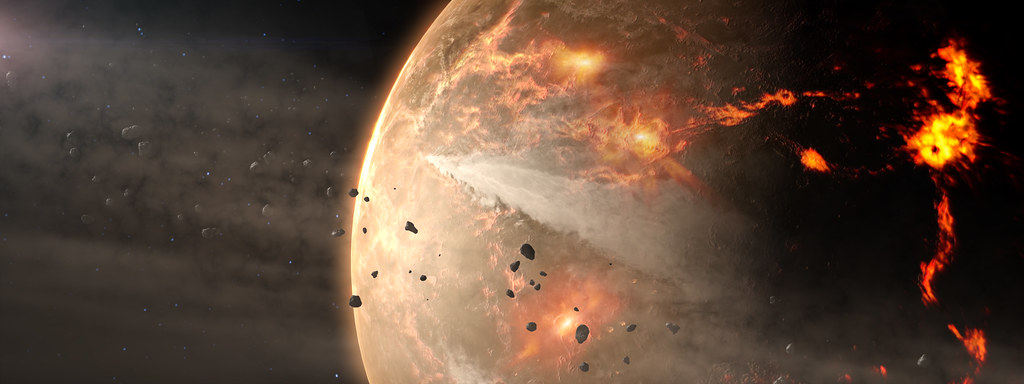Arkansas might not be the first place that comes to mind when you think about dinosaurs, but this southern state holds secrets from the ancient past that would amaze even the most seasoned paleontologist. While the Natural State is better known for its hot springs and diamonds, beneath its rolling hills and forests lies evidence of creatures that roamed the Earth millions of years ago. During the Cretaceous Period, roughly 100 to 120 million years ago, much of what we now call Arkansas was covered by a shallow sea. The coastline stretched through southwestern Arkansas, creating perfect conditions for preserving the footsteps and remains of massive creatures. Today, thanks to decades of careful research and some incredible discoveries, we know that at least five distinct types of dinosaurs once called Arkansas home.
Arkansaurus fridayi: The Official State Dinosaur

Meet Arkansas’s most famous ancient resident – Arkansaurus fridayi, which was named the Official State Dinosaur by the Arkansas General Assembly in 2017. This remarkable creature has quite a story behind its discovery that reads like something from an adventure novel.
In August 1972, Joe B. Friday discovered the remains of the right hind foot of a dinosaur in a shallow pit on his land in Lockesburg (Sevier County). Friday, who owned a service station in Lockesburg, Arkansas, noticed some vultures circling above his land. Checking his cows, he noticed that fossil bones were visible in a ditch near the road where some gravel had been removed recently for the reconstruction of Arkansas Highway 24. He removed them and for some months displayed the fossils in his station. At the time, nobody recognised them for dinosaur bones.
A Swift Predator from the Cretaceous
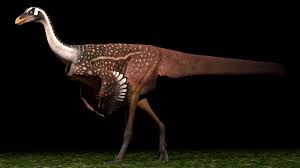
Arkansaurus is the second oldest ornithomimosaur in the United States and resembles an ostrich with a long neck and feathers instead of scales. Arkansaurus measured about 4.6 metres (15 ft) long and weighed about 380.5 kilograms (839 lb). This fascinating dinosaur would have been a formidable sight, standing taller than humans and capable of impressive speeds.
Arkansaurus fridayi would have roamed about 120 million years ago, walking upright on two legs, searching for prey. Although parts of Arkansas were under water at that time, there was enough land to support a hunter such as this creature. Recent research has revealed even more intriguing details about this ancient Arkansas resident. Rothschild noticed the Arkansaurus has a greenstick fracture, which is a partial healed fracture found in bones that have not reached maturity. “Similar to what occurs when one bends a growing (green) branch, the components of the fractured bone retain their connection,” he said. So, the dinosaur was a juvenile when it died.
Acrocanthosaurus: The Spine-Backed Giant
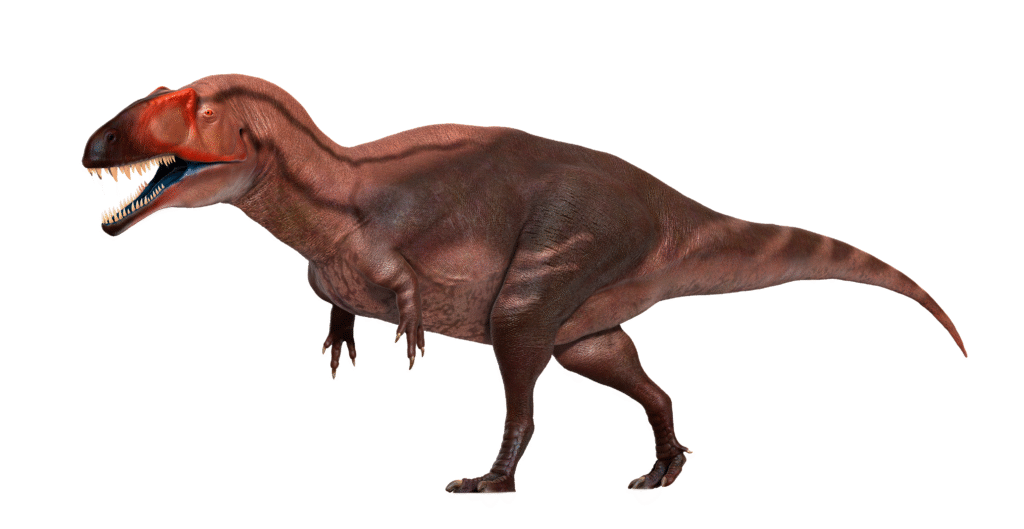
One of the most fearsome predators to ever stalk the ancient shorelines of Arkansas was Acrocanthosaurus, a massive carnivorous dinosaur whose name literally means “high-spined lizard.” These tracks belonged to Acrocanthasaurus, a large carnivorous dinosaur that also dates back to the early Cretaceous period. While no bones of this giant have been found in Arkansas, compelling evidence of its presence comes from preserved footprints.
Acrocanthasaurus tracks have been found in Arkansas, providing evidence of this large predator’s presence in the state. This discovery was particularly exciting because it confirmed that these apex predators had indeed roamed the state. Acrocanthosaurus was no small creature – it could reach lengths of up to 38 feet and weigh as much as 6 tons, making it one of the largest predatory dinosaurs of its time.
Deinonychus: The Terrible Claw

Among the most terrifying dinosaurs that once prowled Arkansas was Deinonychus, whose name translates to “terrible claw” – a fitting description for this fierce predator. Scientists discovered some fragments of theropods like the Deinonychus antirropus and Richardoestia, along with fossilized scutes of an ankylosaurus in that area in recent years.
Deinonychus revolutionized our understanding of dinosaurs when it was first discovered elsewhere in North America, proving that some dinosaurs were active, warm-blooded creatures rather than the sluggish reptiles previously imagined. These pack hunters would have been about 11 feet long and weighed roughly 160 pounds. No other dinosaurs have been named from the Trinity Formation in Arkansas, but rocks of a similar age in nearby parts of Texas and Oklahoma have produced fossils of the large raptor Deinonychus and iguanodont Tenontosaurus, found throughout most of North America.
Sauropod Giants: The Long-Necked Titans

The most abundant evidence of dinosaurs in Arkansas comes from massive sauropods – the long-necked giants that dominated the Cretaceous landscape. There are between 5,000 and 10,000 assorted tracks on the Nashville trackway, most of which have been identified as having been made by sauropods. Some species of sauropods are the diplodocus and the titansaur. Sauropods had long necks and long tails and walked on all fours; they were all herbivores.
These gentle giants would have been an awe-inspiring sight, with some species reaching lengths of over 80 feet and weighing as much as 80 tons. Since it appears that the footprints were made over a period of time, it is likely that they are from a migration path, despite the fact that separate paths of footprints made at different times go in different directions and even cross each other. The sheer number of tracks suggests that Arkansas was part of a major migration corridor for these massive herbivores.
Nodosaurid Ankylosaurs: Living Tanks

Picture a living tank with armor plating, spikes, and a club-like tail, and you have an idea of what nodosaurid ankylosaurs looked like. Among terrestrial forms are several members of Dinosauria and one or more squamates, one of which, Sciroseps pawhuskai gen. et sp. nov., is described herein. Among Dinosauria, both large and small theropods (Acrocanthosaurus, Deinonychus, and Richardoestesia) and titanosauriform sauropods are represented; herein we also report the first occurrence of a nodosaurid ankylosaur from Arkansas.
These heavily armored herbivores would have been virtually invulnerable to attack, thanks to their thick, bony armor plates and defensive spikes. While we don’t have complete fossil remains from Arkansas, the discovery of fossilized scutes (armor plates) provides solid evidence that these living fortresses once grazed in the ancient Arkansas landscape. They typically measured 15 to 20 feet in length and weighed several tons, making them formidable opponents even for the largest predators of their time.
The Nashville Trackway: A Prehistoric Highway

One of the most remarkable dinosaur discoveries in Arkansas isn’t bones at all, but footprints. The Nashville sauropod trackway, which may be the largest dinosaur trackway in the world, was located near Nashville (Howard County). This incredible site tells the story of prehistoric life in Arkansas like no other discovery.
The tracks were covered in soft clay and sediments until they were discovered in 1983 in a quarry at the Briar Plant, a gypsum mining plant owned by the Weyerhaeuser Company. In 1983, dinosaur footprints were discovered at a gypsum mine near Nashville, Arkansas. Jeffery G. Pittman was at the mining site doing research for his master’s degree at Southern Methodist University. He drove his truck across the potholed, limestone floor of the quarry every day. After seeing preserved dinosaur footprints in Colorado and New Mexico, Pittman returned to Nashville to study these “potholes”. He realized they were actually part of a vast dinosaur trackway that included thousands of footprints.
The Briar Site: Where Giants Walked
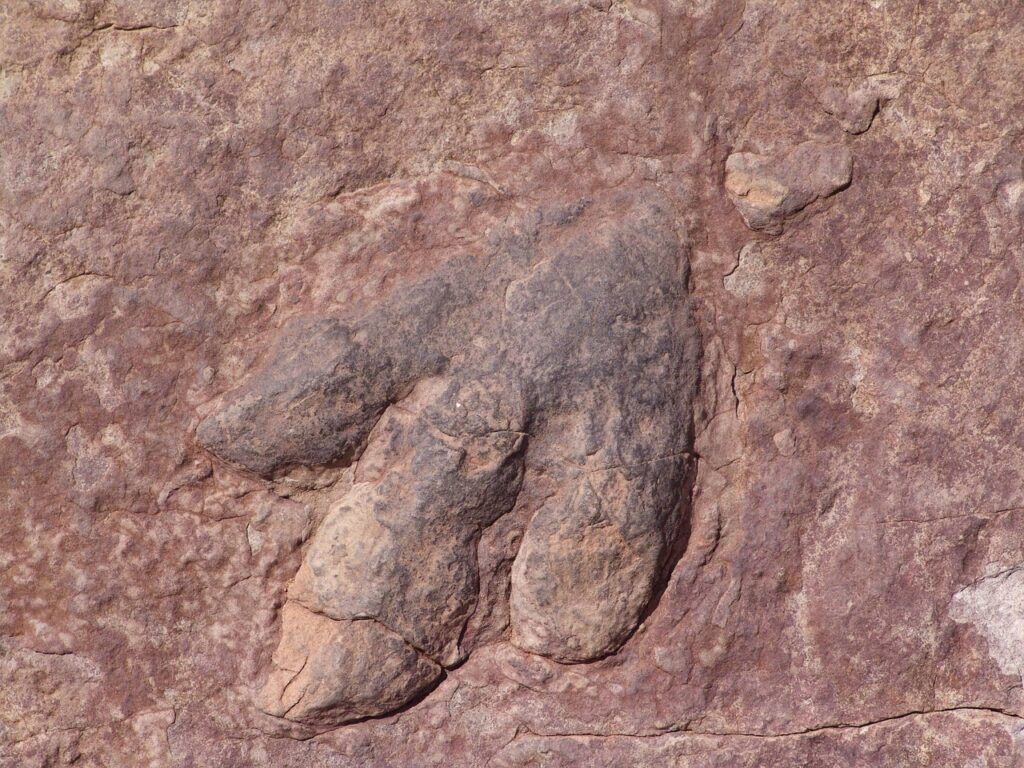
The Briar Site near Nashville represents one of the most significant paleontological discoveries in Arkansas history. A gypsum quarry in southwestern Arkansas preserves dinosaur tracks, which have hindered the quarry operations. This is called the Briar Site. Some areas of the quarry were rough due to what appeared to be large potholes, which frustrated the drivers of the excavation equipment. In 1983, however, these “potholes” were recognized as dinosaur footprints.
What makes this site particularly fascinating is the incredible preservation of the tracks and the story of their near-destruction. However, the footprints had already started to break apart. The limestone that still covered many of the tracks was very brittle, and each rainstorm weathered the exposed tracks more. Some scientists believed that it was already too late to preserve any of the footprints. On top of that, that area of the quarry was scheduled to be mined for gypsum in January 1984, which would not provide enough time to study the prints. It was a race against time that captivated the scientific community.
Modern Discoveries with Ancient Technology
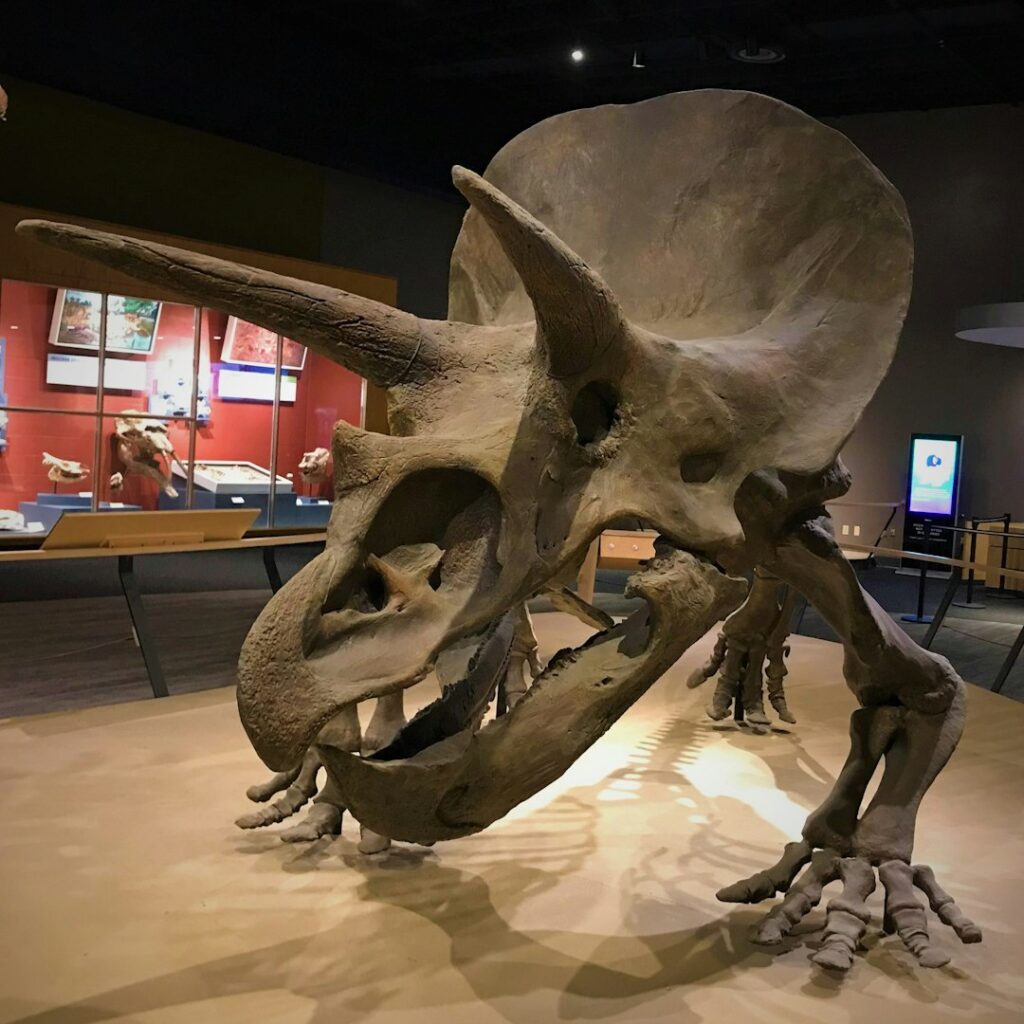
Arkansas continues to yield new dinosaur discoveries thanks to cutting-edge technology. LIDAR-based analyses of the first theropod dinosaur trackways known from the state of Arkansas, USA are reported. The trackways were found on a limestone bedding plane in the Albian De Queen Formation in an active gypsum quarry. Because limited access precluded thorough field study, fieldwork focused on preserving the entire site digitally with ground-based LIDAR, and detailed measurements were later taken digitally from point cloud data.
In June 2011, a new dinosaur trackway site was exposed on private property in southwest Arkansas. Among the numerous sauropod tracks and trackways was the first reported occurrence of theropod trackways in The Natural State. This discovery has revolutionized our understanding of the dinosaur community that once thrived in Arkansas, showing that the area was home to a diverse ecosystem of both predators and plant-eaters.
Where to See Arkansas Dinosaurs Today
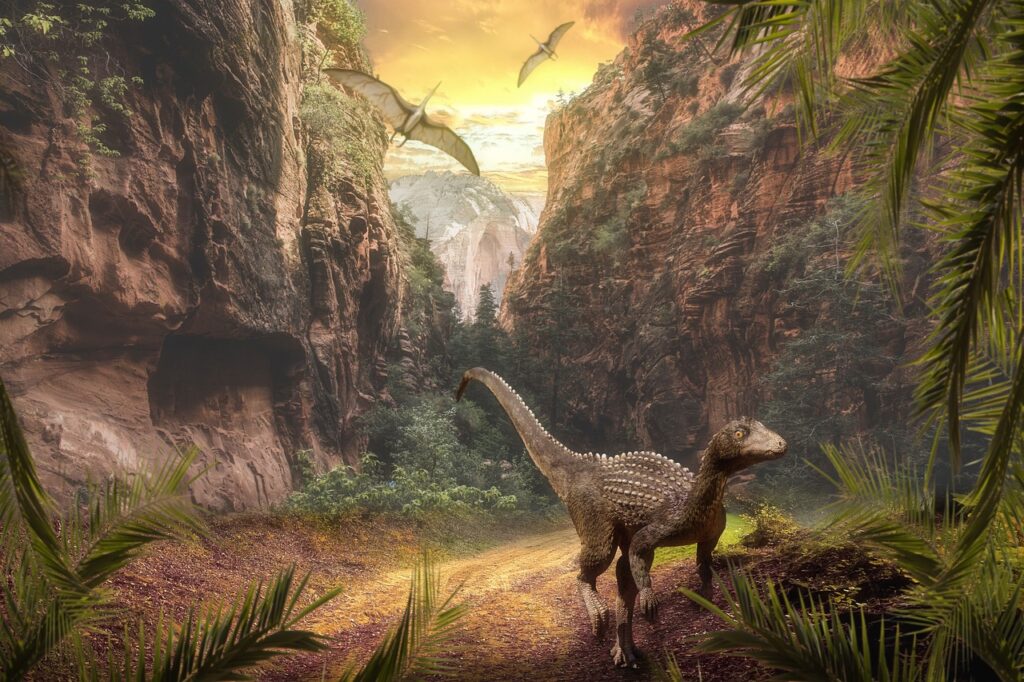
If you want to experience Arkansas’s dinosaur heritage firsthand, several locations across the state offer incredible opportunities. As Arkansas’ first and only permanent outdoor dinosaur exhibit, the Oaklawn Foundation DinoTrek features 13 species of dinosaurs from the Jurassic, Triassic, and Cretaceous periods at the Mid-America Science Museum in Hot Springs.
Casts of the foot may be viewed at the Arkansas Geological Survey (AGS) and the Museum of Discovery, both in Little Rock (Pulaski County). The Museum of Discovery regularly hosts dinosaur exhibits and educational programs. These casts were given to the Friday Family, the University of Arkansas, the Arkansas Geological Commission, and the Arkansas Museum of Science and Natural History. The University cast is hanging in a classroom in Ozark Hall. The Museum of Science and Natural History actually had a large statue of the dinosaur constructed to go along with their cast, and it was on display for many years when the museum was located at the Tower Building. The original bones, donated to the university by Friday, currently reside at the University of Arkansas Museum Collections, now housed at the Arkansas Archaeological Survey in Fayetteville, Arkansas.
Conclusion: Arkansas’s Prehistoric Legacy Lives On

Arkansas’s dinosaur story is far from over. With new technologies like LIDAR scanning and continued excavations, scientists are uncovering more evidence of the incredible creatures that once roamed the Natural State. From the swift-footed Arkansaurus to the massive sauropod herds that migrated along ancient coastlines, Arkansas played host to one of North America’s most diverse dinosaur communities. The next time you’re driving through the rolling hills of southwestern Arkansas, remember that you’re traveling through what was once a prehistoric paradise. Beneath your feet lie the traces of giants that walked the Earth when Arkansas was a very different place – a warm, coastal environment where dinosaurs ruled the land and left their mark for us to discover millions of years later. Who knows what other prehistoric secrets Arkansas still holds, waiting to be uncovered?



